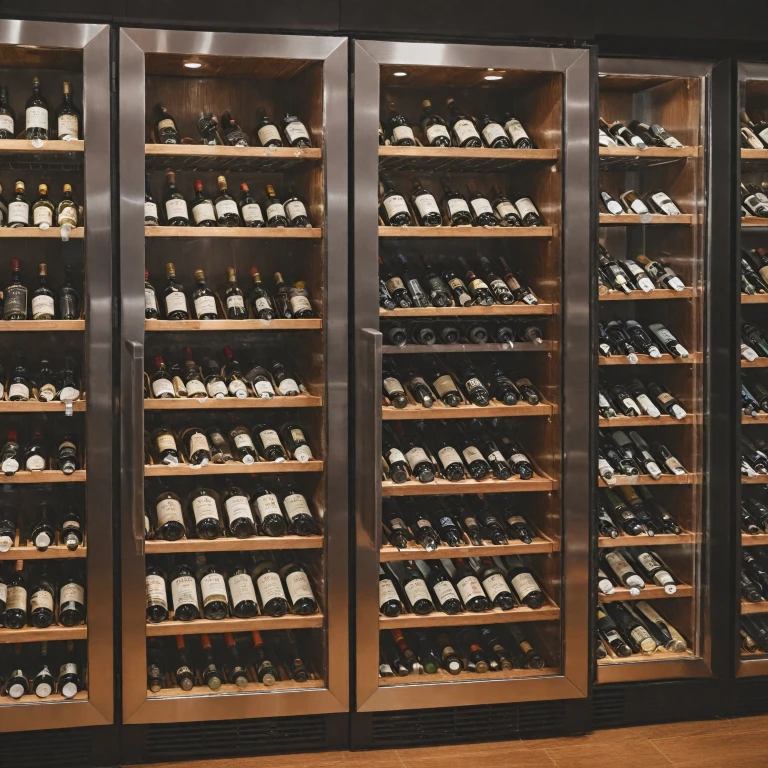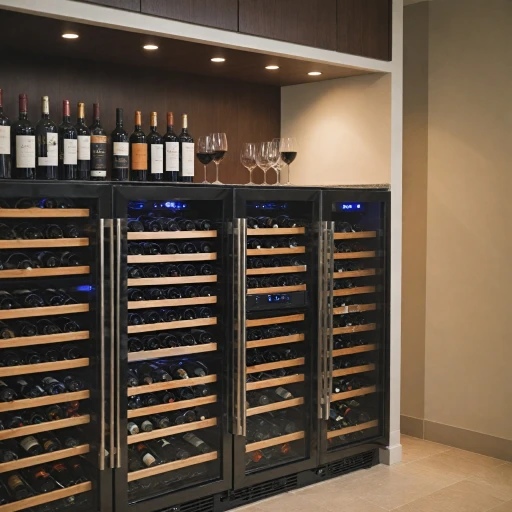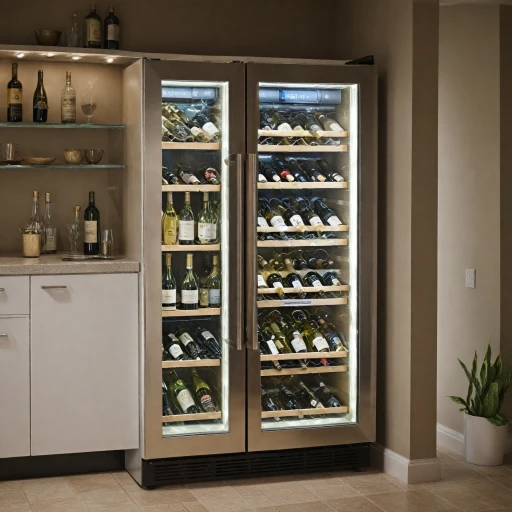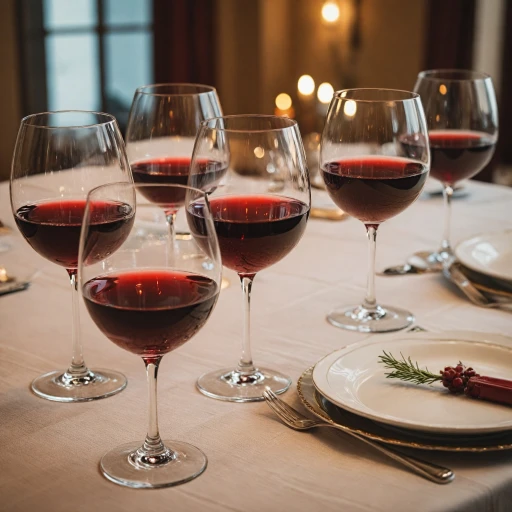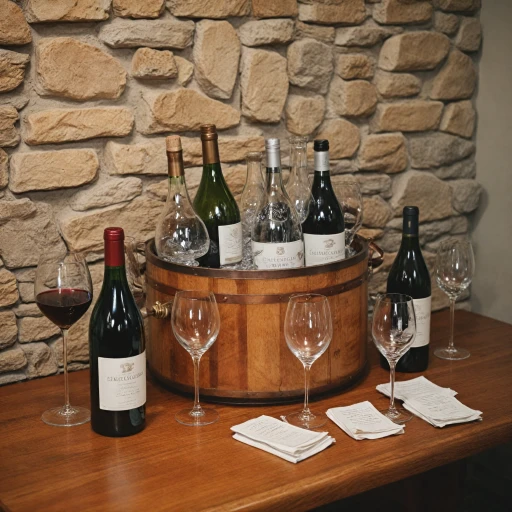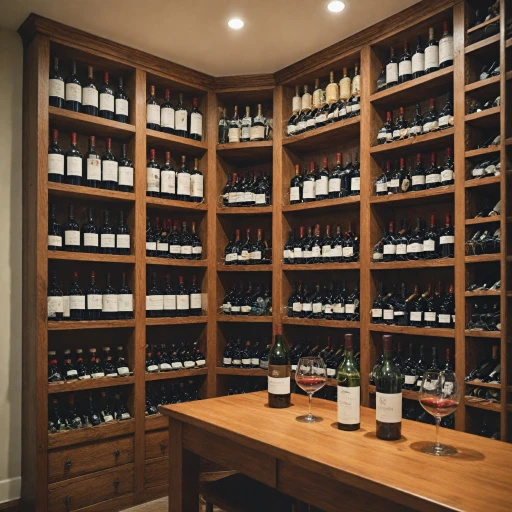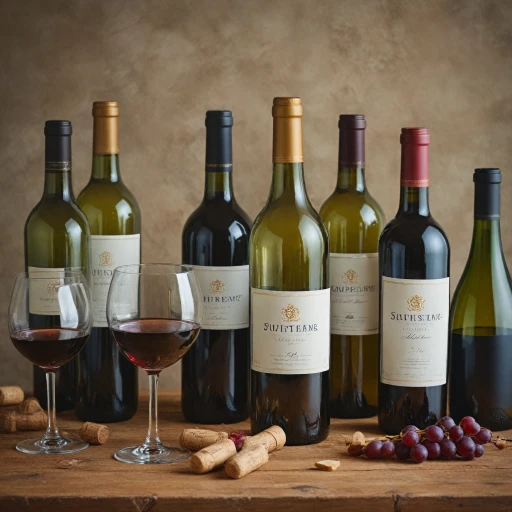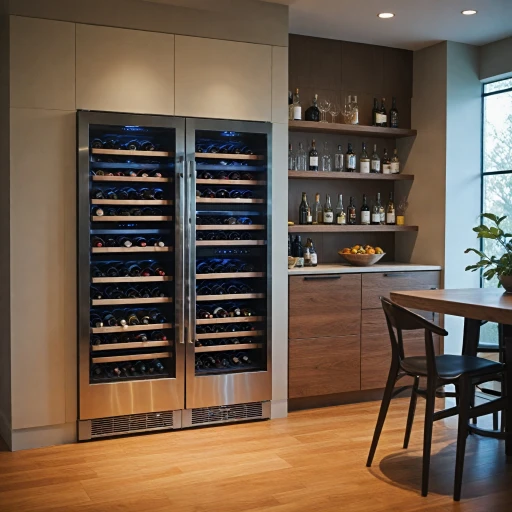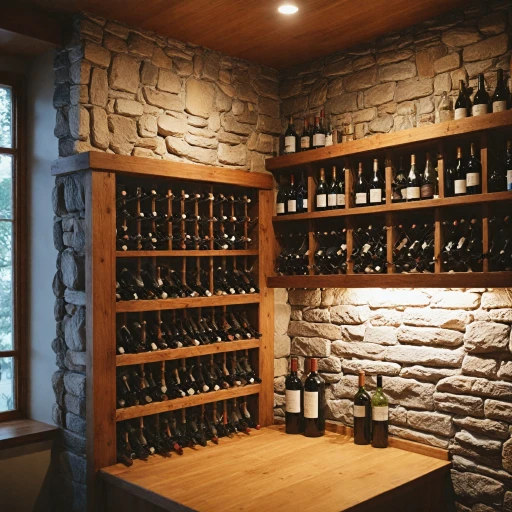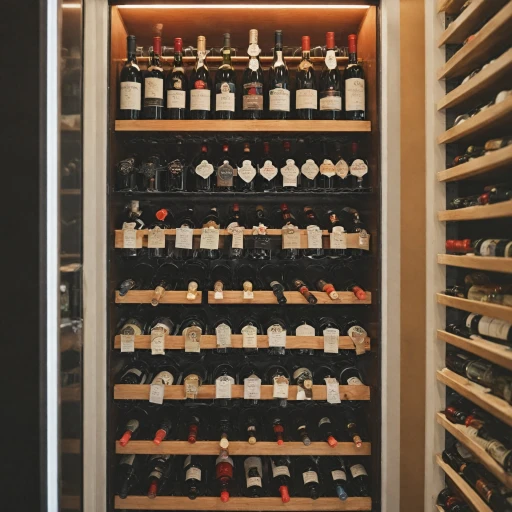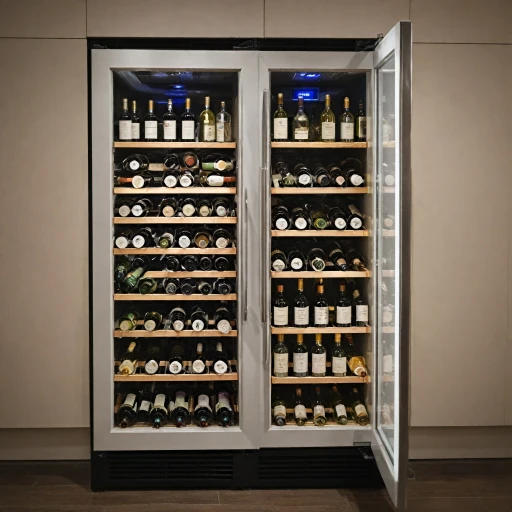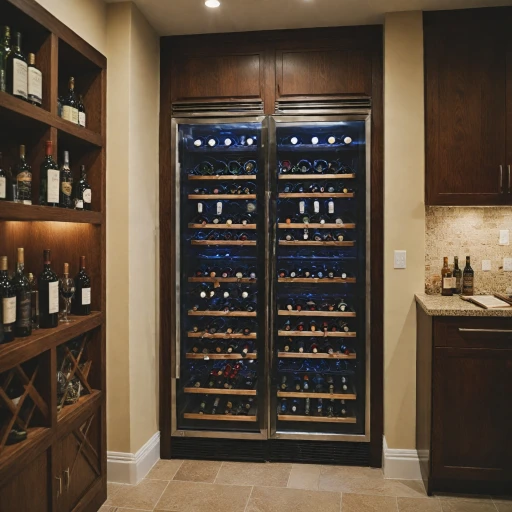
Understanding Wine Cooler Temperature
Unraveling the Science: Wine Cooler Temperature
When it comes to storing your treasured wines, understanding the temperature dynamics of your wine cooler is vital. Wine storage is more than just keeping bottles in a fridge; it involves carefully managing the environment to ensure your wine’s flavor and integrity are preserved over time. A wine fridge or cooler is an essential appliance for any enthusiast looking to optimize their collection’s quality.
Wines are fragile beverages that respond to fluctuating temperatures. Thus, maintaining the ideal cooler temperature is crucial. The purpose of a wine cooler or wine refrigerator is to act as a protective zone for your collection, shielding the bottles from temperature swings that might occur in other parts of your home.
Temperature plays a central role in the aging process of red and white wines. Wine coolers typically offer a range, catering to different needs — from single zone options to dual zone models that allow distinct settings for red and white wine storage. For longer preservation, it’s essential to consider a zone wine fridge that provides a stable environment or, for those with diverse collections, a dual zone wine cooler for separately managing red and white wines.
Different types of wine require different storage conditions to maintain their unique flavors, which makes selecting the best wine cooler or wine storage system a personalized decision. A freestanding unit or integrated cooler might be ideal depending on your available space and storage goals. Factors like the beverage cooler’s serving temperature settings play a significant role in wine fridges functioning efficiently.
Choosing the right cooling solution not only nurtures the flavor of your wines but also enhances your overall wine experience. A wine cooler maximization strategy can be equally integral to preserve and enjoy your collection. Understanding these nuances will guide you in optimizing your wine cooler for perfect storage.
Ideal Temperature Ranges for Different Wines
Perfect Temperature for Each Wine Type
Storing wine at the right temperature is crucial for maintaining its flavor and aroma. Different wines flourish under different conditions in your wine cooler, and understanding these nuances can elevate your wine storage game. The optimal temperatures for wine chillers depend on the type of wine you are storing.
For red wine, the ideal cooler temperature range lies between 55°F and 65°F. This range complements their bold flavors and deep structures without altering their character. On the other hand, white wines require a cooler atmosphere. Storing them between 45°F and 50°F ensures preservation of their delicate fruit notes, making them crisp and refreshing when served straight from the wine fridge.
When it comes to dual zone wine coolers, they offer the flexibility to set the perfect temperature for both red and white wines in separate compartments. This is especially beneficial for enthusiasts who frequently switch between red whites or enjoy hosting diverse gatherings where multiple types of wine are served.
However, if your collection primarily consists of a single type, a single zone wine cooler is often sufficient. These units maintain a consistent temperature throughout, ideal for long-term storage when you want to keep either only red or white wine.
For those who enjoy a variety of beverages, a freestanding wine and beverage cooler might be the best choice. These coolers allow you to store wines alongside other beverages at their respective optimal temperatures, all in one unit.
Understanding the temperature requirements of the wines you store will not only enhance your drinking experience but also ensure your investment in each bottle is preserved.
Factors Affecting Wine Cooler Temperature
Considerations That Impact Your Wine Cooler’s Functioning
When it comes to preserving your bottles, various factors can influence the temperature within your wine fridge. Understanding these elements will help ensure optimal conditions for storing your favorite reds and whites. One key factor is the placement of your wine cooler or refrigerator. Whether it's a freestanding model or built into your kitchen cabinets, location matters. Ensure that your wine storage appliance has adequate ventilation and is not positioned near heat sources like ovens or direct sunlight, which can cause fluctuation in temperature. The type of wine cooler you choose also plays a significant role. Single zone coolers are best for those who primarily collect one type of wine; however, if your collection includes both red and white wines, you might opt for a dual zone model. This allows you to set different temperature ranges suitable for each type. Regular maintenance and monitoring are crucial for maintaining optimal cooler temperature. Check that your cooler is level and clean the condenser coils periodically. A more advanced wine cellar setup might include additional humidity controls to prevent cork drying, which is important for long-term wine storage. Lastly, be mindful of the number of bottles you plan to store. Overloading your wine fridge can lead to inefficient cooling and increased energy consumption. If your collection frequently changes, opt for a cooler with adjustable shelving for greater flexibility. Understanding these factors will help you optimize your wine beverage cooler’s environment, ensuring that each bottle retains its flavor until it's time to serve. For deeper insights, consider exploring the allure of red-tinted wine glasses and their impact on wine appreciation.Tips for Setting and Maintaining Wine Cooler Temperature
Ensuring Optimal Wine Cooler Settings
Finding and maintaining the right temperature for your wine cooler is crucial for preserving the quality of the wines you store. A carefully adjusted temperature ensures your wines age gracefully and are ready for serving at their best. To begin with, it's essential to recognize the ideal temperature ranges for different types of wine that you store in your fridge. Red wines typically enjoy a slightly warmer range compared to white wines. Usually, red wine storage is best between 55°F to 65°F, while white wines benefit from being stored in cooler ranges, somewhere around 45°F to 50°F. If you have a dual zone wine cooler, effectively setting separate temperatures for different wine zones is key. In contrast, single zone wine coolers require a compromise in temperature settings, often opting for a middle ground that suits both red and white wines, although this might not provide the best environment for long-term storage. Maintaining the desired temperature is just as important as setting it. Consider the following tips:- Regularly monitor the thermometer: To ensure your wine cooler stays within the target range.
- Avoid frequent door openings: To minimize fluctuations in temperature caused by exposure to room temperature air.
- Keep the cooler away from heat sources: Greater exposure to sunlight or appliances like ovens could cause the cooler temperature to rise unexpectedly.
Common Mistakes in Wine Cooler Temperature Management
Common Pitfalls to Avoid in Wine Cooler Temperature Management
Ensuring your wine cooler maintains the right temperature is crucial for wine storage, but several common pitfalls can easily disrupt this balance. Understanding these mistakes will help you avoid them and keep your wine tasting its best.- Inconsistent Temperature Settings: Many individuals frequently adjust their wine fridge settings without considering the impact on wine storage. Whether you're storing red or white wines, maintaining a stable temperature is essential. Frequent changes can lead to temperature fluctuations that negatively affect wine quality.
- Not Accounting for Wine Type: Different wines require different storage temperatures. White wines and sparkling varieties like champagne demand cooler conditions compared to reds. It’s important to adjust the wine cooler temperature based on the type of wine being stored to ensure optimal aging and flavor.
- Ignoring the Type of Wine Cooler: There are single zone and dual zone wine coolers, and each serves distinct purposes. Dual zone coolers are designed to accommodate both red and white wines, allowing you to designate specific zones for each. Using a single zone cooler with mixed wine types without proper consideration of temperature needs can lead to less-than-ideal wine storage conditions.
- Overloading the Cooler: Filling the wine refrigerator to its maximum capacity can hinder air circulation within the cooler, leading to uneven cooling. It’s recommended to leave some space between bottles to facilitate airflow, ensuring the temperature remains consistent throughout.
- Misplacing Dual Function Coolers and Fridges: Beverage coolers and wine refrigerators often have dual functionality, but storing non-wine beverages at the incorrect zone can impact wine temperature. It's important to use wine coolers specifically designed for wines, rather than general fridges or beverage coolers.
Choosing the Right Wine Cooler for Your Needs
Selecting the Ideal Wine Cooler for Your Collection
When choosing a wine cooler, it is essential to consider the specific needs of your wine collection to ensure optimal storage conditions. Here are some key factors to guide your decision:- Storage Capacity: Evaluate your current wine inventory and anticipated growth. Wine coolers come in various sizes, from compact units to large, freestanding models. Ensure the cooler can accommodate your collection.
- Single vs. Dual Zone: Single zone coolers maintain one consistent temperature, ideal for storing either red wine or white wine. Dual zone models, however, allow for separate temperature settings, perfect for those who enjoy a mix of red and white wines.
- Serving Temperature: Depending on the type of wine—red, white, or sparkling—you need different temperature ranges. A dual zone cooler facilitates setting appropriate temperatures for each type. This way, you can enjoy your wine at its optimal serving temperature.
- Cooling Technology: Consider whether a compressor-based or thermoelectric cooler better suits your environment. Compressor systems generally handle larger capacities and hotter climates more effectively, while thermoelectric fridges offer quieter and more vibration-free operation, suitable for smaller spaces and moderate temperatures.
- Placement and Style: Decide if a freestanding or built-in design fits your space. Not only should it match your aesthetic preferences, but also ensure there is adequate ventilation when necessary.
- Additional Features: Look for options with adjustable shelves, UV-protected doors, and digital temperature controls, which enhance storage flexibility and wine preservation.
